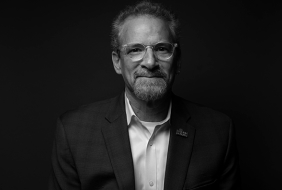This article originally appeared on stlmag.com
To be clear, St. Louis is not America’s comeback city at the moment. If we can get enough of the right heads together on the same page, however, then it’s not out of the realm of possibility in the not-too-distant future. I believe the story of how it could come to be has a distinct possibility of one day becoming national news.
For now, forget the details—instead, let’s focus on the big picture: How might we reverse engineer this to make it a reality? What would a solution or effort with that kind of effectiveness look like?
It would begin with a series of revelations.
It’s not as if there hasn’t been progress in our region. In recent years, at least a billion dollars has been invested in the central corridor alone, from upgrades in the Arch grounds, Forest Park, and other cultural institutions to developments such as City Foundry STL and upscale high-rise condominiums to a new Major League Soccer team and stadium. All of this investment is wonderful and absolutely needed.
Yet despite all of this investment, our region’s longstanding challenges—from our sluggish economy to our troubling crime rates, loss of population in both St. Louis city and county, and continued decline in national prominence and ability to compete with other regions for talent and opportunity—remain as formidable as ever.
That’s the first revelation, which leads to the second: We have yet to effectively invest in our greatest untapped resource—our many people and communities that have fallen behind. It’s why, after so many decades, we still struggle with the same old challenges. Forget the severe social ramifications for a minute. From a purely economic standpoint, we are like a V8 engine running on only four or five of its cylinders.
Investing in people and communities sounds soft. It’s not. For St. Louis, it’s everything. A wealth of research from Washington University in St. Louis, University of Missouri–St. Louis, Forward Through Ferguson, Greater St. Louis Inc., and others shows how our region’s high concentration of poverty has impacted the area in a big way for decades, limiting growth, prosperity, and well-being.
If we can begin to break this cycle, we will bring more St. Louisans into our economy, more of our region fully online, and address many of our complex social problems along the way. To do that effectively, we must also realize that how we’ve invested in people and communities in the past has not produced the change that our region needs and that it’s time for a new approach.
It would look and feel very different than anything we’ve done before.
A solution or initiative that manages to reverse decades of decline and long-entrenched patterns would not be borne from traditional status-quo thinking. It would be bold and ambitious. It would not feel like a scaled-up canned food drive—it would feel like a moonshot.
Like the efforts to revive Detroit, it would be newsworthy with stories in Fortune, Forbes, the Wall Street Journal, and The New York Times. Also like Detroit, the effort would not limited to a single area of focus, such as housing or education. Instead, it would be comprehensive in scope, addressing the multiple interrelated needs of housing, education, employment, economic development, and more.
It would not be another Band-aid. It would be committed to creating real long-term change by recognizing that complex, multigenerational problems cannot be solved overnight or through simplistic solutions.
Business would lead the way.
Like in Detroit, a few prominent business leaders could be the real catalyst to get the ball moving. Because of their stature, others in the business community would follow.
The business community would play a vital role for many reasons. Businesses are an influential force in the region and have a vested interest in its success. These challenges are also too great for government to handle on its own. Given our polarized political climate, business would be able to lead from the center and bring the rest of the region along with it.
Business is about accountability and results. Unlike so many past efforts, a real solution would need to provide actual return on investment for the greater region.
It would be all of this and more.
The 30,000-foot view is important, but details are everything.
If you would like to learn more about Beyond Housing’s comprehensive effort to transform our region’s most under-resourced communities to move all of St. Louis forward, visit Once and for All. If you are interested in our work and ways to help, I would love to talk with you.


